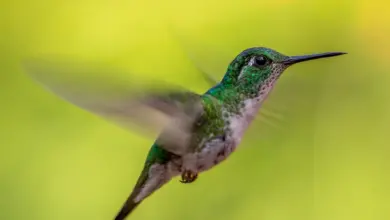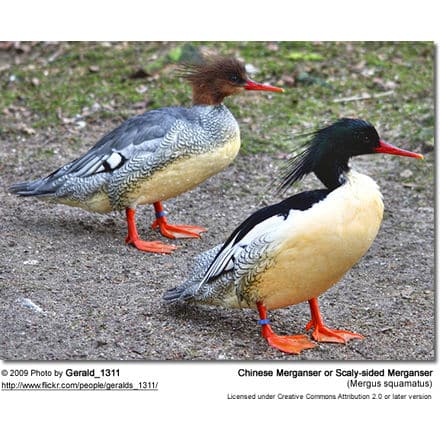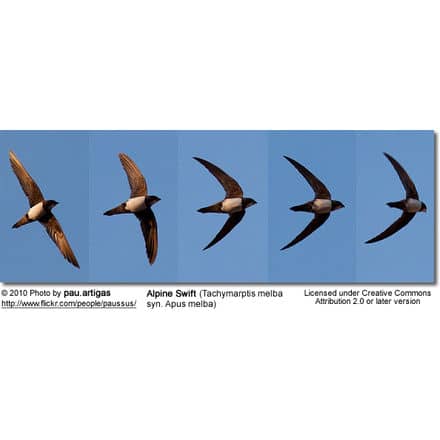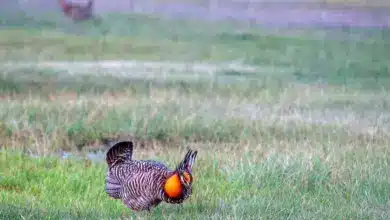Buff-tailed Coronets (Boissonneaua flavescens)
The Buff-tailed Coronets (Boissonneaua flavescens) is a South American hummingbird.
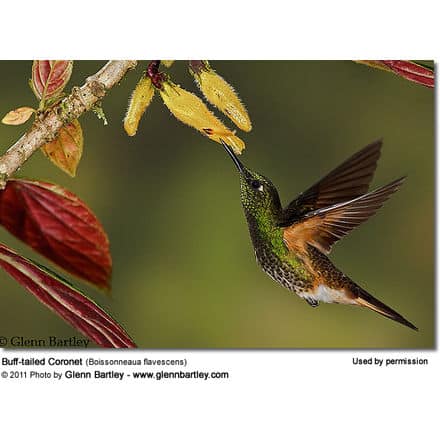

Alternate (Global) Names
Spanish: Colibrí Chupasavia, Colibrí Colihabano, Colibrí de Cabeza Dorada … French: Colibri flavescent … Italian: Colibrì diadema codafulva, Coronetto codacamoscio … German: Fahlschwanzkolibri, Fahlschwanz-Kolibri … Czech: Kolibrík žlutavý, kolib?ík žlutoocasý … Danish: Okkerhalet Juvelkolibri … Finnish: Kanelipyrstökolibri … Japanese: fuchiohachidori … Dutch: Bruinstaarthoornkolibrie, Bruinstaart-hoornkolibrie … Norwegian: Okerhalekolibri … Polish: amorek zielony ….Russian: ????????????? ??????????? ??????? … Slovak: ink zelený … Swedish: Ockrastjärtad kolibri
Distribution / Range
The Buff-tailed Coronets occurs naturally in Colombia, Ecuador and Venezuela.
Subspecies and Distribution:
- Boissonneaua flavescens flavescens (Loddiges, 1832) – Nominate Race
- Found in the Andes of northwestern Venezuela (Mérida) and Colombia
- Found in southwestern Colombia and westermn Andean slope of Ecuador.

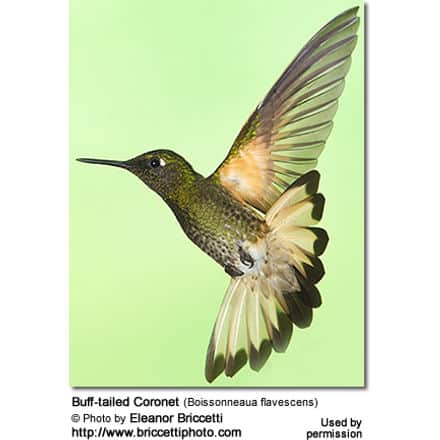
Nesting / Breeding
Hummingbirds are solitary in all aspects of life other than breeding; and the male’s only involvement in the reproductive process is the actual mating with the female. They neither live nor migrate in flocks; and there is no pair bond for this species. Males court females by flying in a u-shaped pattern in front of them. He will separate from the female immediately after copulation. One male may mate with several females. In all likelihood, the female will also mate with several males. The males do not participate in choosing the nest location, building the nest or raising the chicks.
The female Buff-tailed Coronet is responsible for building the cup-shaped nest out of plant fibers woven together and green moss on the outside for camouflage in a protected location in a shrub, bush or tree. She lines the nest with soft plant fibers, animal hair and feather down, and strengthens the structure with spider webbing and other sticky material, giving it an elastic quality to allow it to stretch to double its size as the chicks grow and need more room. The nest is typically found on a low, skinny horizontal perch.
The average clutch consists of two white eggs, which she incubates alone, while the male defends his territory and the flowers he feeds on. The young are born blind, immobile and without any down.
The female alone protects and feeds the chicks with regurgitated food (mostly partially-digested insects since nectar is an insufficient source of protein for the growing chicks). The female pushes the food down the chicks’ throats with her long bill directly into their stomachs.
As is the case with other hummingbird species, the chicks are brooded only the first week or two, and left alone even on cooler nights after about 12 days – probably due to the small nest size. The chicks leave the nest when they are about 20 days old.

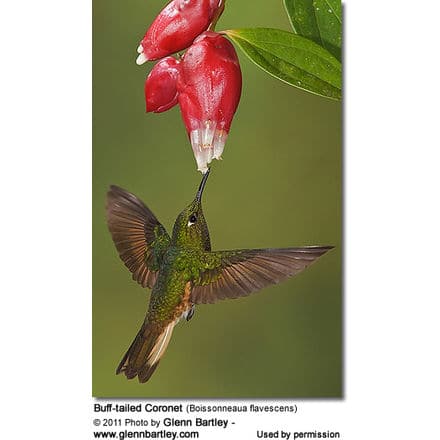
Diet / Feeding
The Buff-tailed Coronets primarily feed on nectar taken from a variety of brightly colored, scented small flowers of trees, herbs, shrubs and epiphytes. They favor flowers with the highest sugar content (often red-colored and tubular-shaped) and seek out, and aggressively protect, those areas containing flowers with high energy nectar.
They use their long, extendible, straw-like tongues to retrieve the nectar while hovering with their tails cocked upward as they are licking at the nectar up to 13 times per second. Sometimes they may be seen hanging on the flower while feeding.
Many native and cultivated plants on whose flowers these birds feed heavily rely on them for pollination. The mostly tubular-shaped flowers actually exclude most bees and butterflies from feeding on them and, subsequently, from pollinating the plants.
Males establish feeding territories, where they aggressively chase away other males as well as large insects – such as bumblebees and hawk moths – that want to feed in their territory. They use aerial flights and intimidating displays to defend their territories.
Metabolism and Survival and Flight Adaptions – Amazing Facts
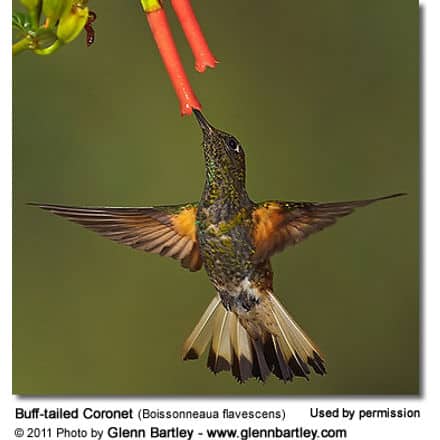
Beauty Of Birds strives to maintain accurate and up-to-date information; however, mistakes do happen. If you would like to correct or update any of the information, please contact us. THANK YOU!!!

